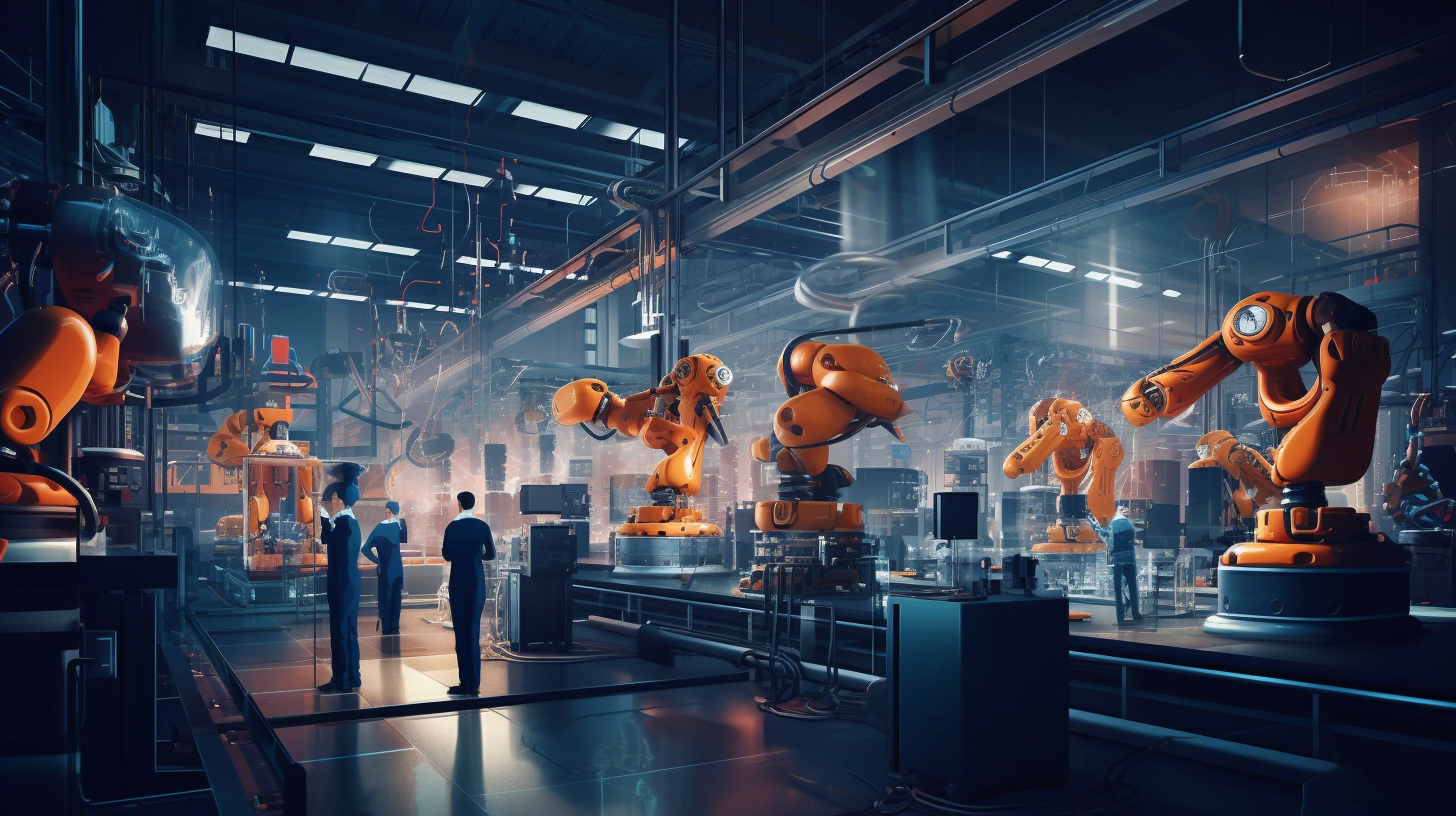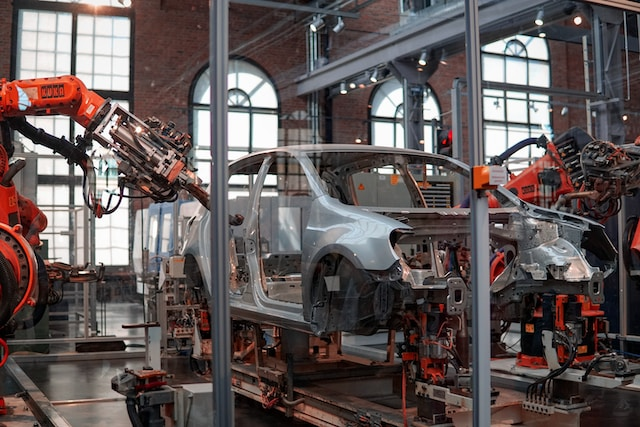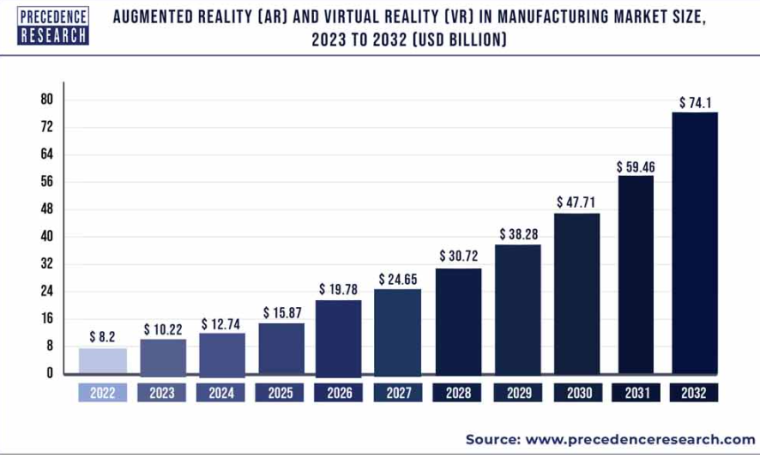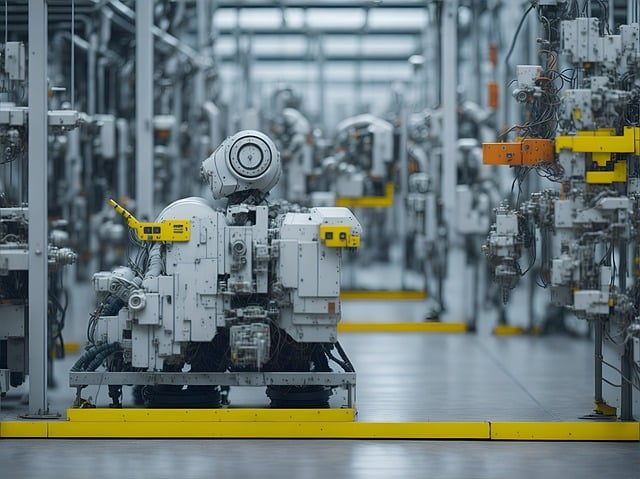Any business that makes or sells physical products must understand the latest manufacturing trends to stay on top of the market. Understanding manufacturing industry developments is key to creating resilient supply chains and streamlining production processes.
Manufacturing trends for 2025 are primarily driven by Industry 4.0, also known as the fourth industrial revolution. Manufacturing in 2025 is digital, driven by robotics innovations, machine learning, and other advanced technologies. At Business2Comunity, we’ve analyzed industry reports and expert opinions to bring you the 9 manufacturing trends your business needs to be aware of.
Key Manufacturing Trends
- Smart factories could add at least $1.5 trillion to the global economy by 2025 if implemented on a wider scale.
- As sustainability practices become more popular, refurbishing and reusing old components could save manufacturers 60% of the total materials costs.
- Service contracts operating in the maintenance, repair, and operations sectors are expected to experience a 60% growth rate over the next three years.
- The shortage of labor in the manufacturing space could cost the US economy up to $1 trillion by 2030.
- The manufacturing industry is the biggest target for cyber attackers in 2023, creating an urgent need for cybersecurity solutions.
What are 2025‘s Manufacturing Trends?
Industry 4.0 is driving innovation in 2023. The fourth industrial revolution started sometime in the mid-2010s and has firmly embedded itself as a strategic priority in the sector and encompasses manufacturing industry trends overall.
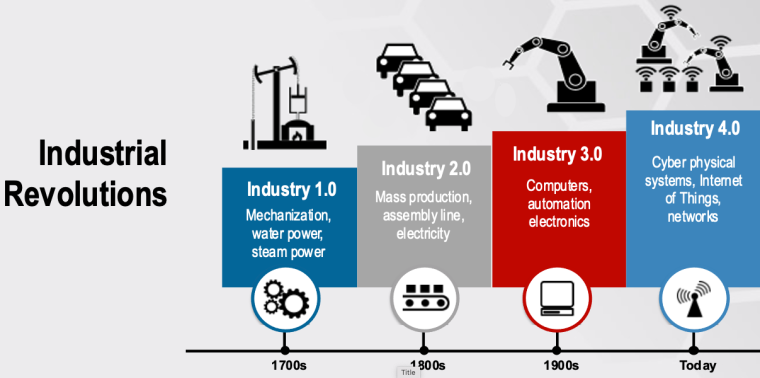
In fact, by 2019, 68% of respondents to a McKinsey global survey said that they considered Indusry 4.0 a top strategic priority.
It’s no surprise then, that many of the defining trends in 2025 deliver on this strategy.
Artificial intelligence, sustainability, cybersecurity risks, and staff shortages are driving 2025‘s industrial manufacturing trends.
Innovations like Product as a Service (PaaS) and recent developments like smart factories and digital twins are underpinned by these four drivers. Let’s explore them in more detail here.
1. Labor Shortages are Affecting Productivity
Labor shortages continue to underpin manufacturing trends. This unfavorable course is likely to last for years to come.
A 2021 study by Deloitte and The Manufacturing Institute says that the manufacturing skills gap in the US could result in 2.1 million unfilled jobs by 2030. This shortage of labor could cost the US economy up to $1 trillion by 2030.
In 2022, approximately 64% of managers within manufacturing companies said that workforce attraction and retention is their primary business challenge.
Several factors are responsible for the labor shortage within manufacturing companies as a whole. These factors include:
- A lack of skilled workers
- Competition for talent from other industries
- Older workers retiring
Many manufacturers are working on ways to tackle the shortages within the manufacturing workforce.
For instance, Amsted Rail, a company operating within the freight and transit railcars sector, has launched a partnership with a program called i.c.stars that puts young people with a GED or high school diploma through a 16-week training workshop and job placement in the industry.
In the short term, the lack of skilled workers in the industry is forcing innovation. Automation efforts that can create efficient supply chains within the context of Industry 4.0 may mitigate some of the impacts of the lack of available labor.
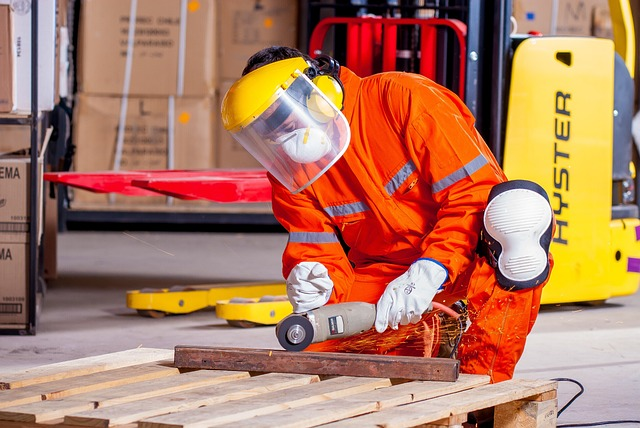
2. Artificial Intelligence and Manufacturing Advances
Digital technologies, particularly artificial intelligence, are driving multiple must-follow manufacturing trends in 2025. Companies adopting artificial intelligence solutions are reaping significant financial and productivity benefits.
AI-based tech comes in many shapes and sizes including:
- Digital twins
- Collaborative robots
- Predictive maintenance
- Augmented reality
- Supply chain optimization through forecasting
Let’s take a look at some of these.
Collaborative robots, also known as cobots, can help big businesses and SMEs maximize efficiency. Unlike industrial robots, collaborative robots work alongside manufacturing employees.
They are equipped with collision avoidance sensors that ensure they can be used safely around humans. Their main purpose is to help automate tedious or dangerous parts of production that can result in quicker and more efficient processes while improving quality control.
Further, cobots can help promote remote work for manufacturing employees, which can help with attracting and retaining talent. The video below shows a cobot in action:
We’ll explore some of the driving AI trends in manufacturing in more detail below.
3. Sustainability is Continuing in its Importance
Sustainability is a driving trend across most industries in 2023, and the manufacturing sector is not an exception to this rule. Customers demand sustainability, and corporations are responding to this demand.
Apple’s targets for reducing emissions within production and operations exceed the minimum requirements of the Science Based Target Initiative’s 1.5° pathway. The company also aims to achieve carbon neutrality within material acquisition and pre-processing by 2030.
This means that Apple suppliers need to adopt sustainable practices in the next few years to help the tech giant meet its goals. As the consequences of climate change worsen and become impossible to ignore, consumers will likely push more massive global corporations to follow suit.
Electric carmaker Polestar is working towards creating a “truly climate neutral car” by 2030. It’s currently working with a range of suppliers and innovators to make this happen.

The circular economy is making waves in the manufacturing and sustainability space, too. The circular economy can be defined as a production model where materials are shared, reused, repaired, and refurbished to reduce waste and extend the lifecycle of products.
This strategy can reduce costs as well as emissions. PWC has estimated that machinery producers could save up to 60% of the total material costs by refurbishing machines and reusing old components.
Using renewable energy sources is another great way to reduce carbon emissions across the supply chain. It can also be more attractive to potential employees while also driving up customer demand.
In addition, renewable energies are a great way to curb rising costs. In Australia, for example, the cost of wind and solar power has fallen by approximately 60% in recent years, as gas and coal prices continue to rise sharply.
According to a 2021 BUY paper, a sustainable supply chain can also increase efficiency by reducing the costs of nonrenewable energy, such as gas and oil.
4. Smart Factories are Central to Innovation
A smart factory is a high-tech manufacturing facility that uses devices and machines connected to the internet to collect data. This data helps make better decisions, increase efficiency, and fix any problems that come up.
The Capgemini Research Institute said in 2019 it believed that smart factories could add at least $1.5 trillion to the global economy by 2025, as a result of productivity gains, as well as improvements in quality and market share.
Also in 2019, a Deloitte and MAPI Smart Factory Study found that smart factory initiatives accelerate business value creation. In fact, companies that implemented smart factory solutions reported 10% to 12% gains across manufacturing productivity, factory utilization, and general labor productivity.
Many manufacturers, including BMW, have successfully implemented smart factories and observed increased productivity and decreased logistics costs as a result.
BMW’s smart factory in Regensburg, Germany, manufactured about 320,000 cars in 2018 alone. The factory made use of advanced technologies like robotics, 3D printing, and smart data analytics.
As a result, BMW managed to cut down the time needed to deploy new applications by 80% while also reducing quality issues by 5%.
The smart factory in Regensburg boasts its own custom-made internet of things platform, where more than 3,000 machines are connected to create efficient processes and spot issues within the supply chain.
5. The Industrial Internet of Things (IIoT) is Growing
The internet of things (IoT) comprises devices that can essentially “talk to each other” over the internet to complete various tasks. The industrial internet of things (IIoT) is a subset of this.
Data is collected to help machines and devices within manufacturing companies, as well as factories, transport, and energy work together.
Predictive maintenance, for instance, provides insights into when machines might fail. This is key to creating resilient manufacturing operations. Without predictive maintenance, factories risk unplanned downtime when a machine breaks down suddenly.
Unplanned downtime incidents cost industrial manufacturers approximately $50 billion each year. Also, poor maintenance strategies can reduce a factory’s productivity by anywhere between 5% to 20%.
The Deloitte graphic below shows how predictive maintenance can help improve maintenance and, therefore, efficiency.
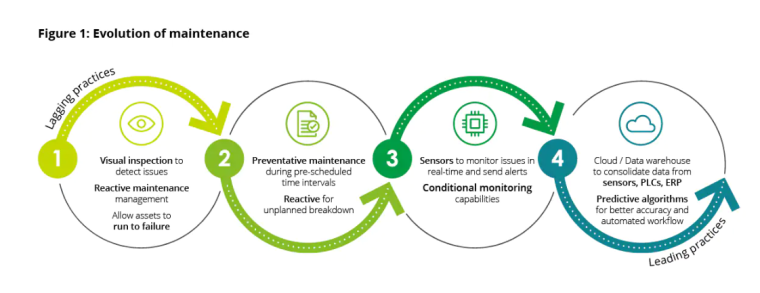
By using IIoT technological advances, factories can employ predictive algorithms that allow for planned downtime at appropriate periods of low demand to service machines before they break down.
Previously, factories relied on rudimentary visual inspections and reactive maintenance tactics where machines ran until they broke down, often at inopportune times.
6. Digital Twins are on Everyone’s Lips
A digital twin is a model of a physical object created in a virtual environment, from the human body to a skyscraper or factory. This model is updated in real-time using data collected from the physical object or system.
The idea of a digital twin is to accurately represent the physical object so that manufacturers can run simulations, identify performance issues, and generate possible improvements within a virtual environment.
Digital twins can also be used to simulate systems and processes to enable seamless optimization. These types of digital twins are called system or unit twins and process twins.
System and unit twins can provide insight into potential performance enhancements. Process twins, on the other hand, can help create more efficient processes by determining optimal timing schemes at each stage of the production process and improving overall effectiveness as a result.
Digital twins have already been successfully implemented among some car manufacturers. Challenge Advisory aimed to implement a digital twins solution to increase annual profit margins by 15% to 20% while reducing the average time to manufacture a specific car model to between 12 to 13 hours.
Challenge Advisory spent two weeks collecting data and implementing their solution before offering recommendations to the manufacturer. The car manufacturer upgraded its car manufacturing process which increased profit margins by about 50%. Furthermore, it now only took between 9 to 10 hours to manufacture a specific car model.
Challenge Advisory, therefore, successfully implemented a digital twins solution that surpassed the goals set by their client in a matter of weeks.
7. Cybersecurity Remains a Concern
While the digitalization of the manufacturing sector helps with supply chain issues and general efficiency, the cybersecurity risk that has arisen as a result can’t be underestimated.
In 2023, according to the World Economic Forum, the manufacturing sector was the biggest target for cyber attackers. Ransomware attacks on industrial infrastructure doubled in 2022 alone, creating the potential for a widescale impact on the supply chain.
Ransomware is the number one cyberattack carried out against the industrial sector right now.
Two key ransomware groups, Conti and Lockbit 2.0, were responsible for 51% of all attacks in 2021. A staggering 70% of ransomware activity from these two groups targeted the manufacturing industry.
As manufacturing companies continue to come under attack, in 2023, the World Economic Forum launched a Cyber Resilience Initiative to aid the global manufacturing sector.
The goal is to create guiding principles and use cases to help build cyber resilience across the supply chain and manufacturing operations.
A set of cyber resilience principles for manufacturing organizations will be introduced to help them enhance their cybersecurity and prevent future attacks.
8. Product as a Service (PaaS) is Trending
Hot on the heels of Software as a Service (SaaS), Product as a Service (PaaS) is the new trendy business model in town. PaaS gives customers access to products on a subscription basis. Customers don’t need to buy the product; they can rent it instead.
Homie, a Dutch appliances rental company, is one example of a successful PaaS company. People who use Homie pay a monthly fee for access to appliances like washing machines.
Their subscription fee covers the use of the washing machine for a certain number of times during a specified period, as well as additional services like free repairs, installation, moving, and recycling of the appliance.
And while the business model is undoubtedly a promising trend, it comes with several manufacturing operation challenges. Supply chain disruptions and labor shortages can impact the delivery of the additional products necessary to “support” a subscription model like PaaS.
For instance, if a Homie washing machine breaks down, it’s up to Homie to source the spare parts and labor to repair it while not disrupting the subscription contract, which can be as short as six months. Turnarounds for servicing and repairs have to be fast. As such, supply chain issues need to be ironed out before a business adopts PaaS.
This is where predictive data analytics on IIoT platforms and further automation of manufacturing processes can help deliver a PaaS solution.
Service contracts operating in the maintenance, repair, and operations sectors are expected to grow 60% over the next three years, which presents an enormous opportunity for manufacturing companies prepared to take on the challenge.
9. Augmented Reality is Integrating Manufacturing
Augmented reality is a type of technology that fuses the virtual world with the real world. Digital images and other information are overlayed in the real world and the person using the AR device can often “interact” with the overlayed materials to some extent as well.
Anyone who has played PokemonGO! or used filters on Instagram or Snapchat has experienced a form of AR. But, augmented reality can have significant benefits within the field of manufacturing as well.
In fact, Precedence Research estimates that the global AR and VR manufacturing market share is currently worth around $8.2 billion. But, by 2032, this is expected to reach around $74.1 billion, showing a healthy demand for this manufacturing solution.
LightGuide, an AR software provider that currently works with major manufacturers like Ford, Caterpillar, and Boeing, has already discovered use cases for AR within the industry. These include:
- Quality assurance tasks where 3D vision cameras can identify potential product errors and store data for future review.
- Digital work instructions can be delivered via AR through audio and visual explanations while workers carry out tasks.
- Manual processes can be monitored more closely, and the exact moment when a mistake is made, for instance, could be recorded; this could help with future learning and refining processes.
Other potential use cases could include building and sharing 3D models and virtual prototypes of products with your team.
Augmented reality is making strides within several manufacturing sectors including:
- Car manufacturing
- Aerospace and defense manufacturing
- Electronics manufacturing
- Medical manufacturing
But use cases exist within all manufacturing sectors and beyond, and so the use of AR is likely to continue and expand in the next few years.
How to Find Manufacturing Trends
Finding manufacturing trends is all about keeping up to date with the latest news and developments across manufacturing industries. There are numerous well-established podcasts, newsletters, and YouTube channels dedicated to the manufacturing sector.
Here are just a few great starting points to help you with your research.
Thomas Industry Update Newsletter
The Thomas Industry Update Newsletter has attracted a community of more than 300,000 industry professionals looking to access up-to-date information in the manufacturing and industrial landscape.
Subscribers get insights on trending technologies within manufacturing, such as automation and additive manufacturing.
Bernard Marr’s YouTube Channel
Bernard Marr’s YouTube channel contains a wealth of information for business owners from all walks of life. Bernard Marr has written more than 20 books on the future of business and regularly publishes content about manufacturing and the latest developments within the field.
With more than a million followers on social media and contributions to the World Economic Forum, Marr is a trusted voice in this space. The video below is an example of the type of content the thought leader publishes.
Today in Manufacturing
In this podcast, the biggest names in the manufacturing industry sector get together every week to discuss the five biggest stories affecting the industry that week. They talk about how the industry will be affected in the future as a result. This is an absolute goldmine if you want to keep up to date with the latest news in the industry and understand how they might impact you and your business as a result.
Following podcasts, newsletters, and publications in this space is the best way to make sense of the latest developments and work out how they apply to you and your business.
The Future of Manufacturing
The advent of Industry 4.0 technologies has transformed manufacturing and will continue to shape it over the next decade. In addition, sustainable practices are likely to form a key part of future smart manufacturing strategies. Here are a few manufacturing trends to keep an eye on in the next few years.
1. Robotics and Automation
Robotics and automation will continue to be a priority, according to IBM. This development enables manufacturers to improve productivity by delegating dangerous and repetitive tasks to robots that are becoming more and more advanced as AI continues to make strides within machine learning and predictive maintenance.
As an example of the potential for growth, the global agricultural robotics market was valued at $5.99 billion, and with a CAGR of 17.7%, it’s expected to reach $30.5 billion by 2032.
2. Reshoring as a Result of Digitalization
As digitalization and robotics continue to develop, we may also experience reshoring. This is where major manufacturers bring back key operations to their home countries. Geopolitical risks and supply chain disruptions have already seen some companies adopt reshoring strategies.
In fact, “reshoring” mentions shot up by 128% within S&P500 earnings transcripts in the first quarter of 2023 as compared to the same period in 2022.
Throughout the 2010s, there was almost no mention of reshoring as low-growth and resilient global supply chains made outsourcing labor overseas more attractive.
3. The ‘Servitization’ of Products
PaaS and other servitization strategies are also likely to continue into the next decade. Manufacturers hope that servitization will enable them to create unique selling points by offering value-added services designed to enhance the customer experience and hopefully generate additional revenue streams as a result.
